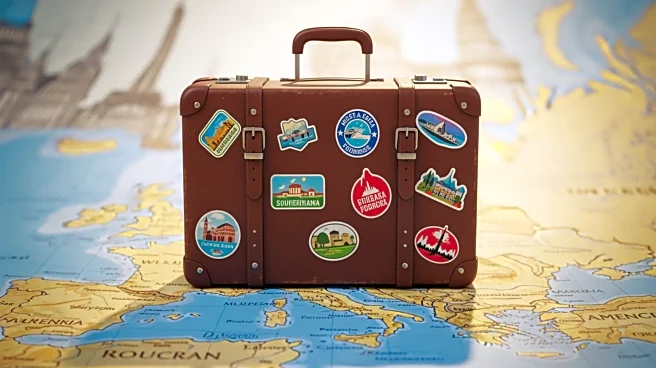What's Happening?
The European Travel Commission (ETC) has released its latest report, 'Monitoring Sentiment for Intra-European Travel,' indicating that 73% of Europeans plan to travel between October 2025 and March 2026.
This figure is consistent with last year's data, showing stable travel intentions among Europeans. The report highlights a rise in international travel within Europe, with 63% of Europeans planning to travel beyond their home country during the autumn and winter months, marking a 3% increase from the previous year. Southern Europe is experiencing a boost in off-season travel, with 52% of European travelers choosing the Mediterranean region, a seven-point increase from last autumn/winter. Spain has seen a significant rise in popularity, with a 12% share, up by five points. Italy and France each attract 8% of travelers. In contrast, interest in Eastern Europe has decreased, with only 4% planning to visit, a six-point drop year-on-year.
Why It's Important?
The stable travel intentions among Europeans have significant implications for the tourism industry, particularly in Southern Europe. The increase in travel to the Mediterranean region during the off-season suggests a shift in travel patterns, potentially leading to economic benefits for countries like Spain, Italy, and France. This trend could result in increased revenue for local businesses and tourism operators, as well as job creation in the hospitality sector. The preference for immersive travel experiences and fewer trips overall indicates a demand for quality over quantity, which could influence how travel services are marketed and provided. Additionally, the rise in air travel preference and the growing share of electric vehicles highlight evolving transportation trends that could impact infrastructure and environmental policies.
What's Next?
As travel intentions remain stable, tourism stakeholders in Southern Europe may focus on enhancing their offerings to attract more off-season travelers. This could involve promoting cultural and heritage experiences, as well as nature and outdoor trips that appeal to travelers seeking immersive experiences. The shift towards fewer but more meaningful holidays may lead to the development of tailored travel packages that cater to specific interests and demographics. Furthermore, the increase in air travel preference suggests potential growth in the aviation sector, prompting airlines to expand routes and improve services to meet demand. The growing interest in electric vehicles may also encourage investment in charging infrastructure and sustainable transportation options.
Beyond the Headlines
The report's findings highlight broader cultural and economic shifts in travel behavior among Europeans. The preference for safety, pleasant weather, and affordability in destination choices reflects changing priorities that could influence future travel trends. As travelers seek warmth, comfort, and affordability beyond the summer peak, destinations may need to adapt their marketing strategies to align with these preferences. The decrease in interest in Eastern Europe suggests potential challenges for tourism in that region, requiring targeted efforts to attract visitors. Additionally, the emphasis on immersive experiences and fewer trips may lead to a reevaluation of travel's role in personal fulfillment and leisure, impacting how travel is perceived and valued in society.













